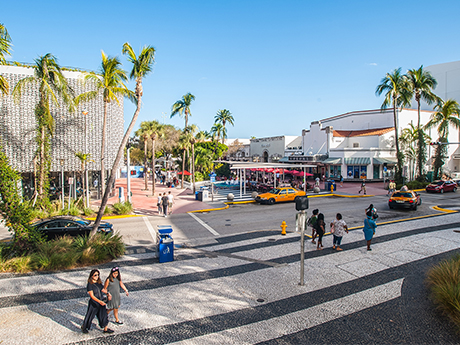Miami is a vivacious city renowned for its scenic beaches, sunny climate and dynamic nightlife. The South Florida city is also a hub for a flourishing retail industry, which serves an eclectic blend of both locals and visitors.
Miami’s retail market is characterized by its diversity, with a broad spectrum of retailers ranging from luxurious, high-end boutiques to small, locally owned businesses. This range of retailers is a reflection of the city’s diverse population, which includes a sizable Hispanic community, as well as individuals from all corners of the globe. Consequently, Miami’s retailers must be adept at catering to a wide range of tastes.

One of the most notable trends in the Miami retail market in recent years has been the growth of e-commerce. Like many other cities around the world, Miami has seen a significant increase in online shopping. This has presented both challenges and opportunities for retailers in the city.
On the one hand, the rise of e-commerce has led to increased competition for brick-and-mortar retailers in Miami. Online retailers such as Amazon and Walmart have made it easier than ever for consumers to shop from the comfort of their own homes, and this has put pressure on traditional retailers to adapt and find new ways to reach and attract customers.
Some retailers have responded by investing in their online presence, offering online ordering and delivery services, and promoting their products through social media and other digital channels. Many retailers have adjusted from the typical retail footprint to utilizing small bay warehouses for exclusively online sales.
On the other hand, the growth of e-commerce has also created new opportunities for retailers in Miami. Many consumers still prefer to shop in-person, and retailers that can offer a unique and compelling in-store experience are often able to differentiate themselves from their online competitors.
For example, some retailers in Miami have invested in experiential retail, offering in-store events and activities, as well as personalized service and product recommendations.
One of the biggest challenges facing retailers and all businesses in Miami is the high cost of real estate. Miami is a popular destination for tourists and investors, and this has driven up the price of commercial real estate in the city. While states like California, Illinois and New York have recently been declining in population, Florida has become the fastest growing state for the first time since 1957 with more than 22 million people. This can make it difficult for small businesses and independent retailers to find affordable retail space to lease or purchase, and it can also limit the range of products and services that are available to consumers.
Another challenge facing retailers in Miami is the high level of competition. With so many retailers competing for attention, it can be difficult to stand out and attract new customers. This has led many retailers to invest in marketing and advertising, as well as in-store promotions and sales, in order to differentiate themselves.
Another emerging trend is the rise of pop-up shops, or temporary retail spaces that allow retailers to showcase their products in a unique and engaging way. These shops can be used to launch new products, test out new markets or build buzz around a brand.
In Miami, pop-up shops have become increasingly popular, as they offer a way for retailers to connect with customers in a more personal and engaging way.
The retail market in Miami persists as a lively and dynamic scene, despite the obstacles it faces. Given the city’s diverse population and expanding economy, Miami presents several prospects for adaptable and innovative retailers. By embracing novel trends and technologies, and providing exceptional in-store experiences, retailers in Miami can sustain growth and prosperity amidst the intensifying competition.
In conclusion, the retail market in Miami is a reflection of the city itself: diverse, colorful and constantly evolving. While retailers in the city face a range of challenges, from rising real estate costs to increased competition from e-commerce, there are also many opportunities for those that are able to adapt and innovate. By embracing new trends and technologies, offering unique and compelling in-store experiences — or removing the in-store experience all together and passing those savings along to customers — retailers in Miami can continue to thrive.
— By Craig Merlin, Associate at NAI Miami. This article originally appeared in the May 2023 issue of Southeast Real Estate Business.


